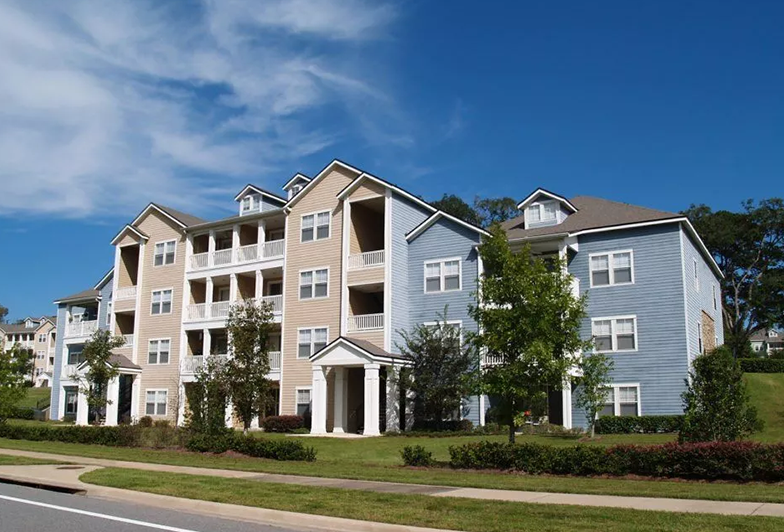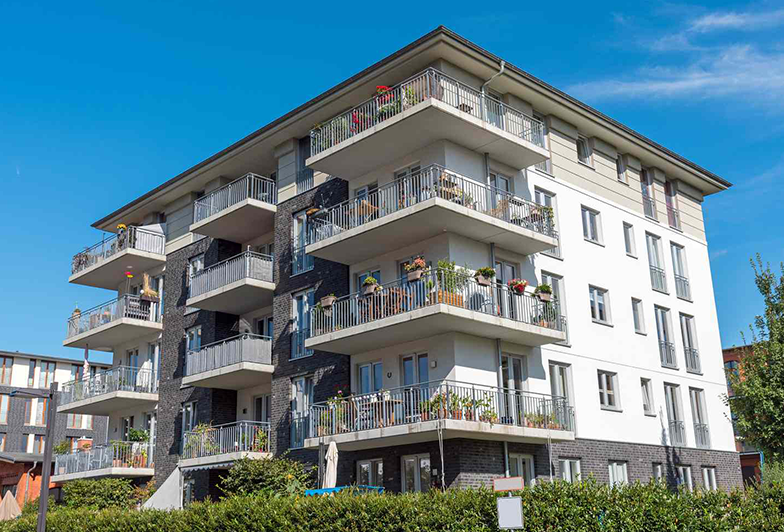How Multifamily Real Estate Drives Short Notes Success
The potential of multifamily real estate investments can be extremely lucrative for the wise investor. Learn about the fundamentals of multifamily properties, their strength in today’s market, and the current trends shaping this dynamic industry, including office-to-multifamily conversions. This article will guide you towards making informed investment decisions and maximizing your returns effortlessly with Short Notes.
What is Multifamily Real Estate?
Investors looking to generate passive income should consider investing into multifamily development. These properties are single buildings divided to accommodate multiple families, including duplexes and small apartment buildings with up to four units. Larger apartment buildings with more than four units are classified as commercial real estate.
Investing in multifamily real estate through direct property ownership provides investors with flexibility. Investors can live in one unit and rent out the others, or rent out all the units whilst living elsewhere. Multifamily properties offer a versatile and profitable investment opportunity for generating steady passive income.
Strength of Multifamily Real Estate
When people hear the phrase “commercial real estate” (CRE), office space typically springs to mind. However, CRE is much more diverse, encompassing several sub-sectors such as retail, industrial, hotel, special purpose, and multifamily properties.
While the office space sector has faced significant challenges recently, multifamily real estate has emerged as the most successful sub-sector of CRE. This booming segment now represents nearly 70% of the $5.4 trillion overall U.S. commercial real estate market. Multifamily real estate has proven to be a solid, resilient, and viable investment strategy, offering excellent returns to investors.
Institutional investors have responded to the success of multifamily real estate by increasing their investments in the sub-sector, with real estate constituting up to 13% of their total portfolios. Individual investors, particularly younger individuals with net worths of at least $3 million, are also increasing their allocations to multifamily real estate, anticipating above-average returns.
Traditionally, investing in CRE has involved complexities and barriers that made it difficult for everyday investors to participate. Fortunately, the Connect Invest Short Notes model has created a pathway for everyday investors to invest in active commercial developments and reap the benefits of portfolio diversification, tax breaks, and inflation hedging.
Current Multifamily Real Estate Trends
Before we examine how Connect Invest’s Short Notes work, let’s delve into the current trends in the multifamily real estate space.
Urbanization has consistently driven the demand for multifamily real estate. In a report compiled by the United Nations, it has been projected that 89% of the total U.S. population will reside in urban areas by 2050. The aging population prefers the convenience of urban living with better access to public facilities, while the growing immigrant population gravitates toward rentals in city centers. These trends underscore the growing demand for multifamily housing.
The U.S. faces a severe housing shortage of 3.2 million units due to a persistent demand-supply imbalance. Over the past nearly 20 years, home construction has plummeted by 55%. Rising labor and material costs, global political upheavals, supply chain issues, and relentless bureaucracy have exacerbated the problem much further.
However, multifamily properties benefit from annual lease turnover, which helps them avoid volatility and seasonality. Larger multifamily buildings are less affected by individual vacancies compared to smaller enterprises. According to the NHMC, the multifamily sector boasts the highest returns with the lowest volatility among real estate investments.
Office to Multifamily Conversions
Remember the old saying about necessity being the mother of invention? This saying rings true when applied to housing. The severe shortage of homes has led investors and policymakers to explore repurposing underutilized office space into housing.
The shift to remote work has caused the office vacancy rate in the U.S. to rise to 19.6%, the highest level since at least 1979. Several analysts predict that this trend will continue over the next decade, with some cities like San Francisco nearly at a shocking 37% office vacancy rate. It’s important to note the rate of increase is slowing nearly nationwide.
Goldman Sachs analysts have determined that about 4% of vacant U.S. office buildings are no longer viable. In cities where remote work is more prevalent, 14-16% of office buildings may face obsolescence. Many of these buildings are more than 30 years old, lack necessary renovations, and have vacancy rates exceeding 30%.
Despite the hype for potential conversions, only a tiny portion of office inventory has been transformed into multifamily real estate, with just 0.49% converted in 2023. Goldman Sachs analysts project that this figure will increase to 0.74% by 2028.
One major challenge in converting offices to multifamily properties is the high cost of office spaces, which discourages developers from pursuing such projects. Institutional barriers also make it difficult to convert these spaces, and lenders have often chosen to extend or modify office mortgages to prevent forced sales.
Safety codes present another significant barrier to office to multifamily conversions. For instance, building codes require bedrooms to have windows of specific sizes, making it next to impossible to convert some office buildings. Additionally, transforming an office’s plumbing, ventilation, and electrical systems to meet residential standards have proven to be challenging and costly.
Multifamily Projects Funded by Short Notes
Great news is on the horizon - multifamily properties are expected to experience a significant growth rate of 2.66% over the next four years. This makes it an opportune time to invest in multifamily real estate, and Connect Invest’s Short Notes make investing in commercial real estate accessible to the average investor.
Our Short Notes fund active real estate projects across the U.S., with a purposely diversified portfolio to ensure stability. Out of 116 projects funded by Short Notes, 64 are commercial developments, with the majority of those loans consisting of multifamily developments.
Veteran executives at companies including Goldman Sachs and Howard Hughes have declared that investing in highly sought-after new real estate construction in 2024, especially residential units, is a sound strategy.
Here are some examples of multifamily projects funded by Short Notes:
- Phoenix, AZ: The collateral for this loan consists of 2.15 acres of land ready to be developed into a 32-unit, low-rise multifamily complex. With building permits in hand, our borrower will acquire the site and almost immediately start construction. The build time is 12 months, with a total cost of $11,360,000. The borrower plans on refinancing the cash-flowing asset upon stabilization of the property. The units will average 1,324 square feet and rent for $1,850 per unit.
- Englewood, CO: This loan is collateralized by 3 acres of land near Park Meadows, one of Denver’s premier malls. The borrower has worked with the city to get a 35-unit townhome development approved for the site, which is anticipated to be completed in early 2025. Once the development is completed, the lots will be sold to the borrower’s affiliated home-building company, Lokal Homes. The roughly 1,921 square foot homes are anticipated to sell for an average of nearly $750,000.
- Kalispell, MT: The borrower intends to get final approval for a six-building, 24-unit multifamily development on a 1.67-acre parcel of land. The proceeds will be used to develop the project horizontally.
Investing in multifamily properties through Connect Invest's Short Notes offers a stable and lucrative opportunity for average investors to participate in the growing CRE market.
Bottom Line
Historically, real estate has been considered a low-risk investment because it appreciates in value and provides steady rental income. Connect Invest’s Short Notes make real estate investments accessible for both beginner and experienced investors alike.
Short Notes offer higher-than-average returns of 7.5 - 9%, with investment terms ranging from 6 to 24 months. Investors start earning monthly interest payments just a month after making their initial investment, with a minimum of $500. Setting up your Connect Invest account only takes a few moments.
If you have any questions, our experienced team is ready to assist you!

